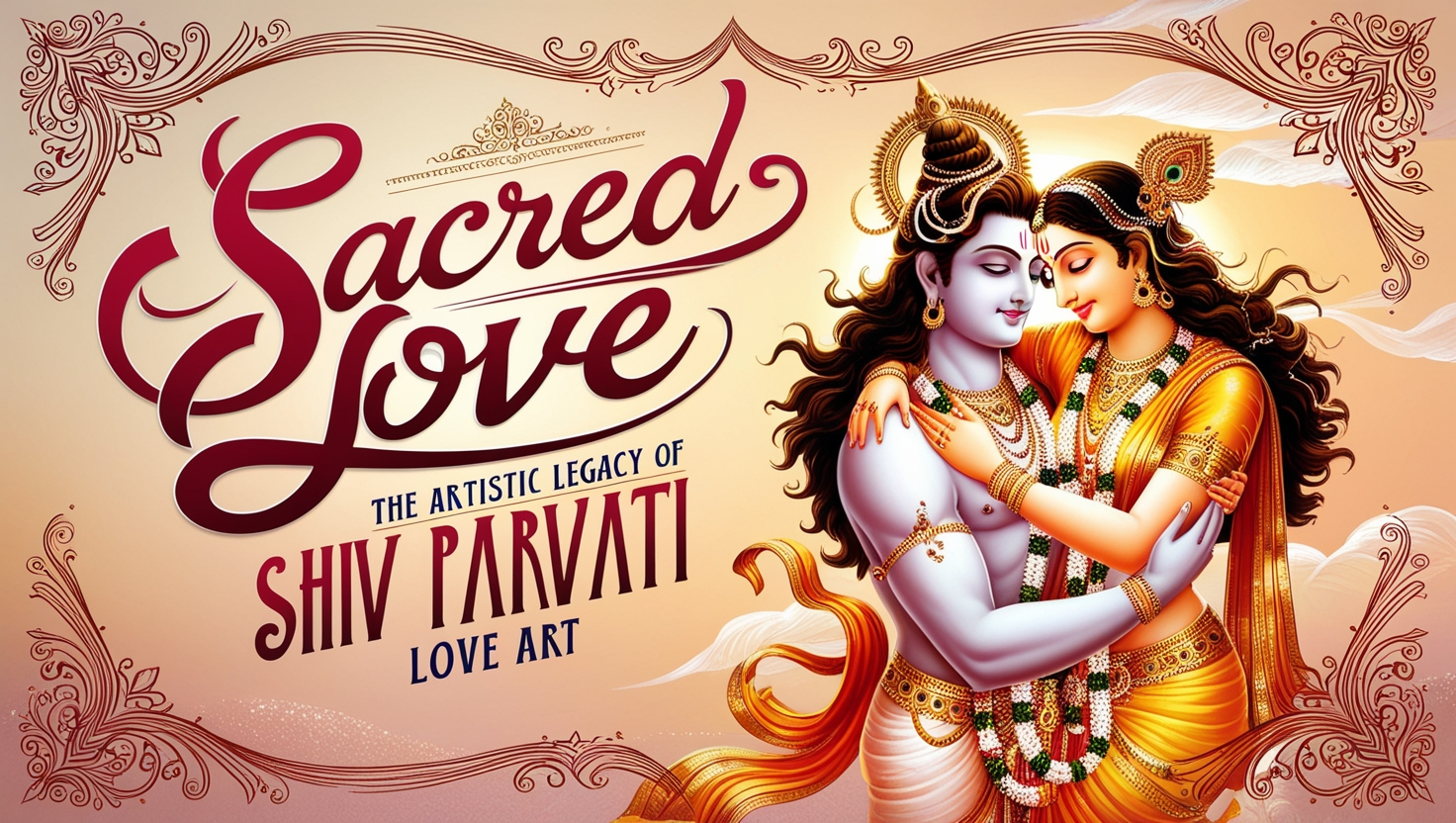Sacred Love: The Artistic Legacy of shiv parvati love art
Triune Gods Shiva, Vishnu, and Brahma make up the holy trinity. Shiva, the God of Destruction, and Parvati, the daughter of the Himalayas, become the most powerful pair in the world when they join together. He is never alone with Parvati. According to Hindu belief, one must also worship Parvati, who is Shakti (the embodiment of energy), to properly honor Shiva. “Lord whose half is a woman” means the phrase Ardhanarishvara. Indigenous artists and craftspeople have a firm grasp of this concept and serve as a continual reminder to us through a wide variety of media. Come with us as we tour the heavenly realm of shiv parvati love art, where the everlasting devotion of Lord Shiva and Goddess Parvati is brought to life through beautiful illustrations and paintings. This essay will lead you toto a visual tour of Shiv Parvati, illuminating the spiritual meaning, enchantment, and beauty ofof many art forms.

The Birth of Parvati – The Divine Embodiment of Love and Devotion
Parvati, lovingly known as Shakti, took birth as the cherished daughter of King Himavan and Queen Mainavati. From a tender age, her heart was captivated by Lord Shiva. She grew up enchanted by tales of Mahadev—his immense strength, deep wisdom, and powerful meditation.
King Himavan, often revered as King Parvat, and his devoted queen, Menavati, worshipped Goddess Adi Parashakti with unwavering faith. Touched by their devotion, the divine energy herself chose to be born as their daughter—Parvati, the goddess who would one day become Shiva’s eternal consort and the nurturing force of the universe.
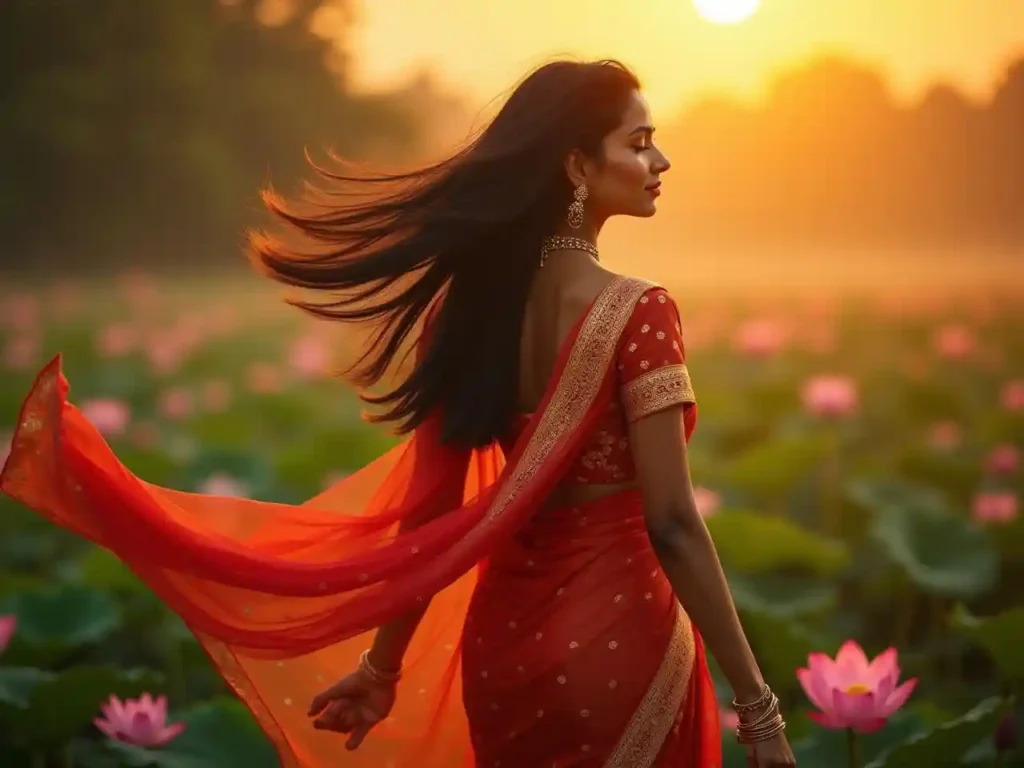
How Did Goddess Parvati Win the Heart of Lord Shiva?
As Parvati grew into a graceful and radiant young woman, her beauty and gentle nature won the admiration of many kings and noblemen. Yet, her heart longed for none but Shiva. She had only one dream — to become the beloved of the great ascetic lord.
Determined, Parvati made her way to the remote cave where Lord Shiva was deep in meditation. There, she began her devoted worship — renouncing food, comfort, and all worldly pleasures. She chose instead to survive on mere air and dry leaves, quietly offering her love and prayers.
But Shiva, unmoved and still immersed in his trance, remained silent. Even when Parvati brought him fruits with care and devotion, he did not stir. Not once did he open his eyes or acknowledge her presence.
Desperate but hopeful, Parvati turned to the god of love, Kamadeva, and his wives — Rati and Priti. With their help, the barren cave was transformed into a vibrant garden, filled with blossoms, chirping birds, and life. As the scene bloomed with beauty, Kamadeva aimed his arrow of love at Shiva.

But the arrow failed to break Shiva’s meditation. Instead, it awakened his fury. Opening his third eye, he reduced Kamadeva to ashes on the spot. The loss saddened Parvati, yet she comforted Rati and Priti, assuring them that love would find its way back into the world — the day Shiva finally accepted her.
Realizing that no charm could win him, Parvati chose to follow the path of deep tapasya — the same path once walked by Sati, Shiva’s first wife. She gave up her royal comforts and retreated to the forest, living as an ascetic. Her penance was fierce — she walked barefoot in the snow, sat still under the scorching sun, stood on one foot for hours, and survived only on sunlight.
With each trial, her inner strength grew. Her meditation became so intense, so powerful, that her energy radiated through the cosmos, stirring even the mighty Shiva. Her aura finally reached him, gently pulling him out of his trance.
Awakened, Lord Shiva was struck by the strength of her devotion. Curious, he asked who she was. That’s when Lord Vishnu and Lord Brahma arrived and shared Parvati’s story — her unwavering love, her incredible sacrifices, and her ascetic journey that mirrored Shiva’s own.
Moved beyond words, Shiva finally saw her not just as a devotee, but as his true equal. Touched by her purity and perseverance, he agreed to accept Parvati as his consort — the one who would stand beside him for all eternity.
The Grand Wedding of Shiva and Parvati
After years of devotion, longing, and spiritual trials, the universe finally witnessed the sacred union of Shiva and Parvati — a love that transcended lifetimes. Their divine wedding was more than just a celebration; it was the fulfillment of cosmic destiny. King Himavat, Parvati’s father, joyfully accepted the match, and the grand event was attended by gods, sages, and celestial beings from across the heavens.
On the day of the wedding, Lord Shiva arrived in his most authentic form — wild and majestic, smeared with holy ash, adorned with serpents, and draped in tiger skin. His unconventional appearance startled many, but not Parvati, who saw only her beloved. Dressed in divine radiance, she shone like the very embodiment of grace and devotion.
Their union was not just the coming together of two souls, but a cosmic alignment — symbolizing the perfect balance between masculine and feminine energy, renunciation and devotion, destruction and creation. It was a reminder to the world that true love isn’t about outer appearances, but about a deep spiritual connection that can endure all trials.
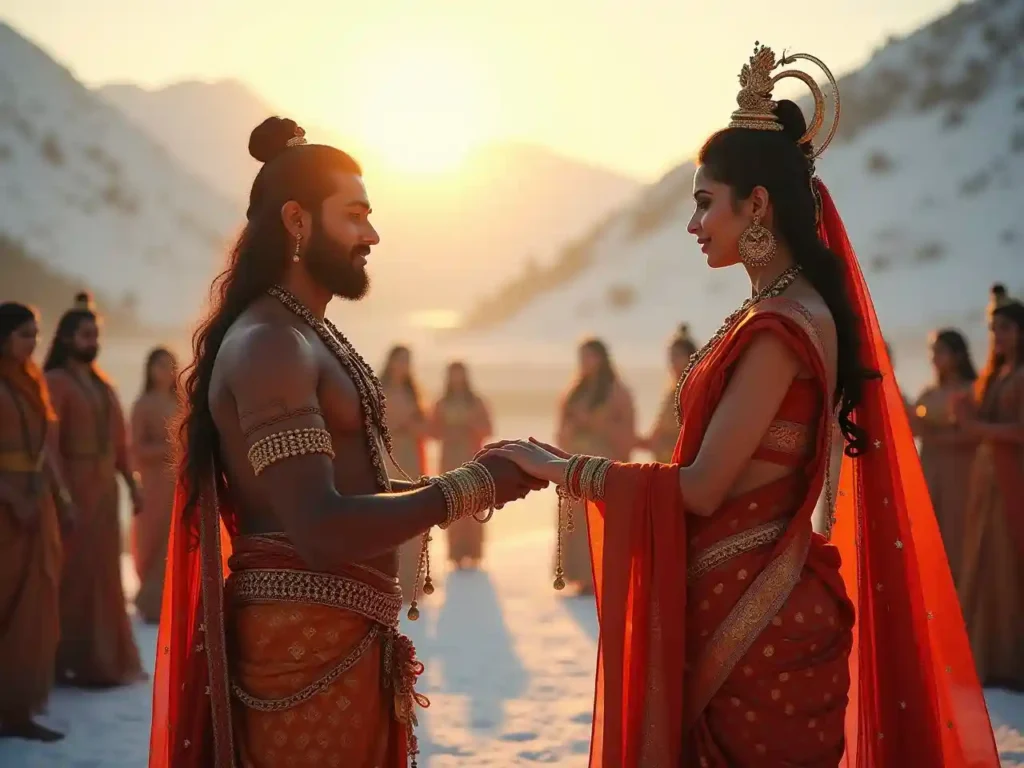
The marriage of Shiva and Parvati remains one of the most celebrated events in Hindu mythology. The universe rejoiced, and celestial melodies filled the air as Lord Vishnu, Lord Brahma, and all divine beings gathered in bliss.
Together, Shiva and Parvati became the eternal symbol of harmony — a union of power and peace, love and discipline, spirit and matter — holding the balance that keeps the cosmos alive.
How Did the Bond of Shiva and Parvati Become Ardhanarishvara?
After their sacred union, the love between Shiva and Parvati only grew deeper. Unlike ordinary relationships, their connection was rooted in profound respect, balance, and spiritual understanding. Parvati became Shiva’s perfect counterpart — her warmth and compassion gently softened his austere, meditative nature.
One of the most iconic moments in their divine love story is the creation of Ardhanarishvara — a form where Shiva and Parvati merged into a single being, half male and half female. This powerful image represents the truth that masculine and feminine energies are interdependent — neither whole without the other.
Their love was more than romance; it was a partnership of purpose. In another significant tale, their son, born of Shiva’s essence and Parvati’s divine will, was destined to protect the universe from the mighty demon Tarakasura.
The love story of Shiva and Parvati is rich with moments of sacrifice, compassion, and unwavering devotion — showing us that the deepest bonds are forged through unity of soul, not just body.
The Power of Shiva and Parvati
Goddess Parvati’s gentle presence radiates the warmth of motherhood — tender, nurturing, yet immensely powerful. Her love isn’t just soft; it’s fierce, embracing the world with unwavering compassion. Parvati is not just one goddess — she is many. Her divine expressions, including Durga and Kali, have been worshipped across the Indian subcontinent since long before the Common Era.
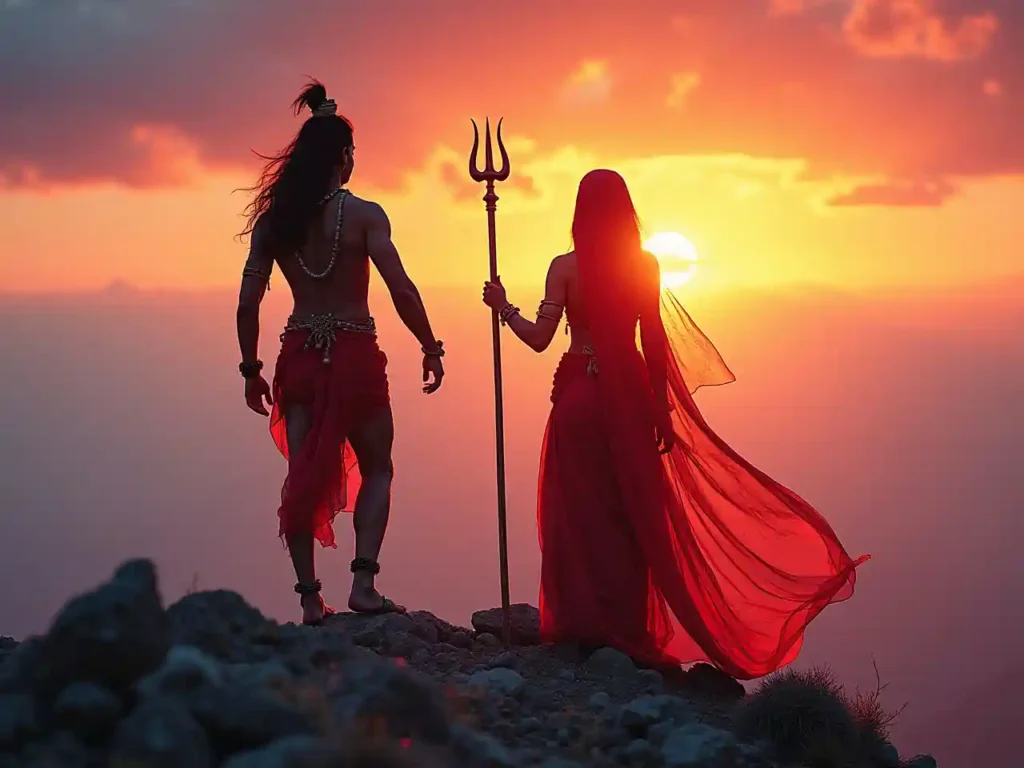
Though Parvati herself isn’t directly named in the ancient Vedas — the earliest spiritual texts of Hinduism — her other powerful forms appear in them. Each form of Parvati is celebrated as a unique goddess, each carrying her own energy and significance.
As Durga, she is the fearless warrior — riding a roaring tiger, charging into battle, and annihilating evil. As Kali, she becomes the fierce force of creation and destruction, severing the ties of ego and ignorance with her blood-stained sword, a severed head in one hand symbolizing liberation from illusion.
Parvati is also Kamakshi, the goddess of love, and Annapurna, the goddess of nourishment — feeding not just stomachs but souls. Across India and beyond, in South and Southeast Asia, she is worshipped in countless names and forms — each one offering strength, hope, and healing.
But Parvati’s story is incomplete without Shiva. She is the devoted mother and powerful goddess, but also the loving wife of Lord Shiva — the ascetic, the dancer, the yogi, the tribal protector, and the divine half of Ardhanarishvara, where Shiva and Parvati exist as one being, perfectly balanced.
Shiva, too, appears in many roles — as Nataraja, the cosmic dancer; as Pashupata, the kind shepherd; or as the fierce slayer of evil. But it is together, in union, that Shiva and Parvati become an unstoppable force — a harmony of creation and destruction, love and discipline, power and grace.
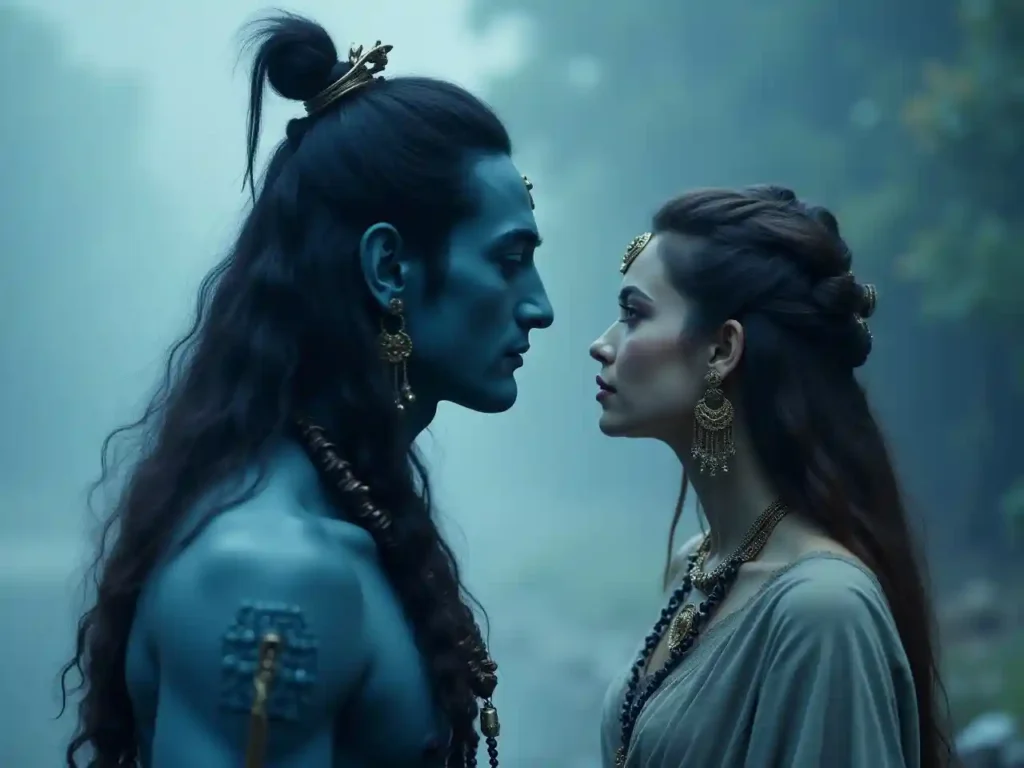
The Incarnation of Shakti
The tale of Shiva and Parvati is told in many forms across Hindu scriptures, each version adding depth to their divine bond. After the tragic self-immolation of Shiva’s first wife, Sati, the grief-stricken Lord withdrew from the world. Immersed in deep meditation, he turned away from all social connection, lost in sorrow and silence.
Seizing this moment of divine stillness, the asura king Tarakasura obtained a boon from Lord Brahma — that only a son of Shiva could bring about his end. Believing himself now invincible, Tarakasura wreaked havoc across the cosmos, overpowering the gods and disturbing universal balance.
To restore order, Parvati — the reincarnation of Sati — was born to King Himavan, the Lord of the Himalayas, and Queen Mena. With unwavering resolve, she took on a life of intense penance and austerity, hoping to win Shiva’s heart and bring him back from solitude.
In desperation, the gods sent Kamadeva, the god of love, to awaken Shiva from his trance. Though Shiva was stirred, his fury knew no bounds — and with a flash of his third eye, Kamadeva was reduced to ashes. Despite this, the gods pleaded with Shiva to marry, and he eventually agreed — but not without testing Parvati’s devotion first.
Disguised as an old hermit, Shiva approached Parvati and mocked himself, questioning why she would want to marry such a recluse. Parvati, loyal and fierce in her love, refused to listen. As she turned to leave in anger, Shiva revealed his true form and accepted her as his bride — moved by her unwavering devotion.
Their divine union soon blessed the world with a son, Kartikeya, who fulfilled the prophecy by slaying the demon Tarakasura — restoring peace and balance to the universe once more.
The Ultimate Devotion of the Princess
The story of Shiva and Parvati began long before their union — when Sati, Shiva’s first love, was reborn as Parvati. From the earliest days of her childhood, Parvati carried within her a deep, unexplainable love for Lord Shiva. She would wander into forest clearings, gently placing flowers at his feet, whispering his name with a heart full of hope, dreaming of the day he might open his eyes and see only her.
But dreams alone weren’t enough — Parvati knew she had to act. So began the determined journey of a princess whose devotion would one day write the eternal love story of Shiva and Parvati.
Believing love could awaken him, she turned to Kamadeva, the god of love, and pleaded with him to shoot his divine arrow into Shiva’s heart. Ever willing to help in matters of the heart, Kamadeva agreed and released his love-charged bolt toward the meditating lord.
The moment it touched Shiva, he stirred — but instead of love, it was fury that arose. Furious at being disturbed from his deep meditation, he opened his third eye in a flash of lightning, and Kamadeva was instantly turned to ash. With all three eyes shut tight, Shiva withdrew deeper into stillness, untouched by the world once more.
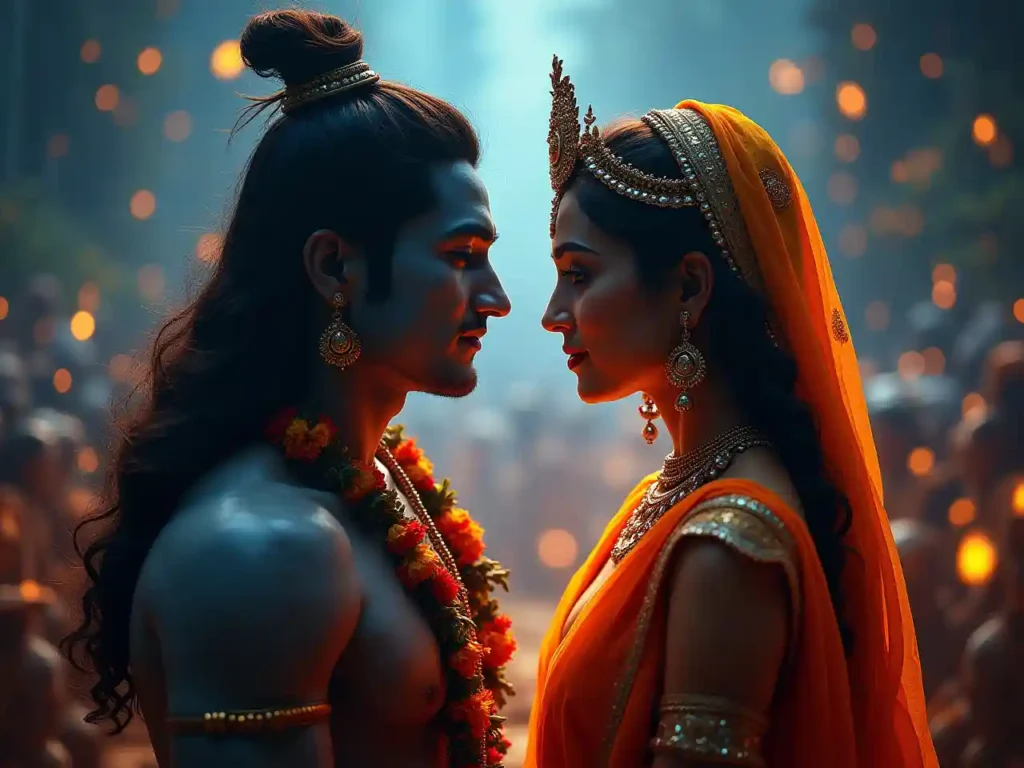
Parvati was heartbroken — her plan had failed, and the cost had been heavy. But she did not give up.
Instead, she turned inward. Parvati began her own meditation. She stood on one leg over burning coals for a thousand years. Then again, she stood for another thousand years, this time on freezing snow. Her penance — her tapasya — burned with such intensity that even the meditating Shiva, lost in timeless stillness, felt her growing energy reach him like a gentle, persistent flame.
Awakened by her unwavering devotion, Shiva finally opened his eyes — not in anger, but in awe.
Moved by her strength, her love, and her endurance, he accepted her as his equal, and thus, their divine wedding united them not just as husband and wife, but as cosmic partners — a love story written in the stars.
The Balance of Nature – Ardhanarishvara
Shiva, in his pure joy and inner bliss, radiated a peace that deeply drew Parvati toward him. Her heart, filled with love and longing, led her to try everything to win his affection. And in time, her devotion blossomed into divine love, and the two were blissfully united in marriage.
Parvati, now one with Shiva in life, longed to share not just his presence but his inner experience — the deep ecstasy he carried within. One day, she asked, “This joy I see in you, I want to feel it too. How can I? Tell me. I’m ready to do anything.” Shiva smiled and gently replied, “There’s no great task to perform. Just come and sit on my lap.”
With complete trust and surrender, Parvati sat on his left side — her heart open, her soul unguarded. Seeing her total willingness to dissolve all barriers between them, Shiva drew her into himself. At that moment, they became one — not just in spirit, but in form.
He offered half of himself, and she gracefully took that space. Thus emerged Ardhanarishvara — the form where Shiva and Parvati exist as one being, half-man and half-woman.
The word “Ardhanarishvara” is made from three Sanskrit words — Ardha (half), Nari (woman), and Ishwara (lord), meaning “The Lord whose half is Woman.” In this form, Shiva represents the divine masculine, while Parvati embodies the sacred feminine.
Ardhanarishvara is not merely a symbol; it’s a powerful reminder of the inseparable balance between masculine and feminine energies. It represents unity in duality — the generative force of the cosmos born from harmony between opposites. Shiva, the Purusha (consciousness), and Parvati, the Prakriti (nature), come together to create life, balance, and meaning.
This divine form harmonizes the two distinct ways of life — Shiva’s austere, meditative path and Parvati’s nurturing, worldly wisdom. Through Ardhanarishvara, we understand that both energies are equally divine, equally essential, and together, they create the perfect whole.
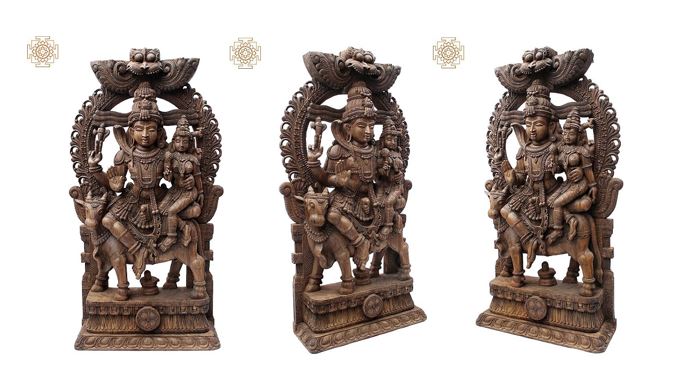
“Uma-Maheshwara” Large Wooden Shiva Parvati Seated on Nandi with Kirtimukha Arch
Love Despite Differences
Though bound by divine love, Shiva and Parvati were, in many ways, beautifully different. Shiva — the lord of meditation and transformation — carried an aura of stillness and detachment. He roamed the wild mountains, covered in ash, lost in deep contemplation. His presence was raw, simple, and deeply spiritual.
Parvati, on the other hand, was the goddess of love, devotion, and life itself. She brought with her a gentle glow — full of warmth, beauty, and joy. Wherever she went, she brought color and grace, a sharp contrast to Shiva’s austere and rugged world.
Shiva’s quiet strength and simplicity stood in contrast to Parvati’s lively, spirited nature. Yet, it was this very contrast that made their bond so powerful. Her lightness brought balance to his depth. His silence calmed her storms.
Shiva, with his ash-smeared body and wild locks, symbolized a life free from material attachments. Parvati, radiant and graceful, embodied all that was nurturing, loving, and vibrant. She was the life force to his stillness, the dance to his meditation.
Their love teaches us something timeless — that true connection isn’t about sameness, but about harmony. Despite their differences, they completed each other in the most profound way. Parvati’s tenderness softened Shiva’s intensity, while his grounded spirit steadied her dynamic energy.
Together, they reflect the essence of Ardhanarishvara — the eternal balance of male and female, yin and yang, creation and stillness. A love that transcends differences, reminding us that sometimes, opposites don’t just attract — they make each other whole.
A Visual Symphony of shiv parvati love art
1. Images of Shiv and Parvati:
Indulge in a gallery of captivating images of the heavenly couple in various sacred positions and environments. Their everlasting bond is well depicted in these images.
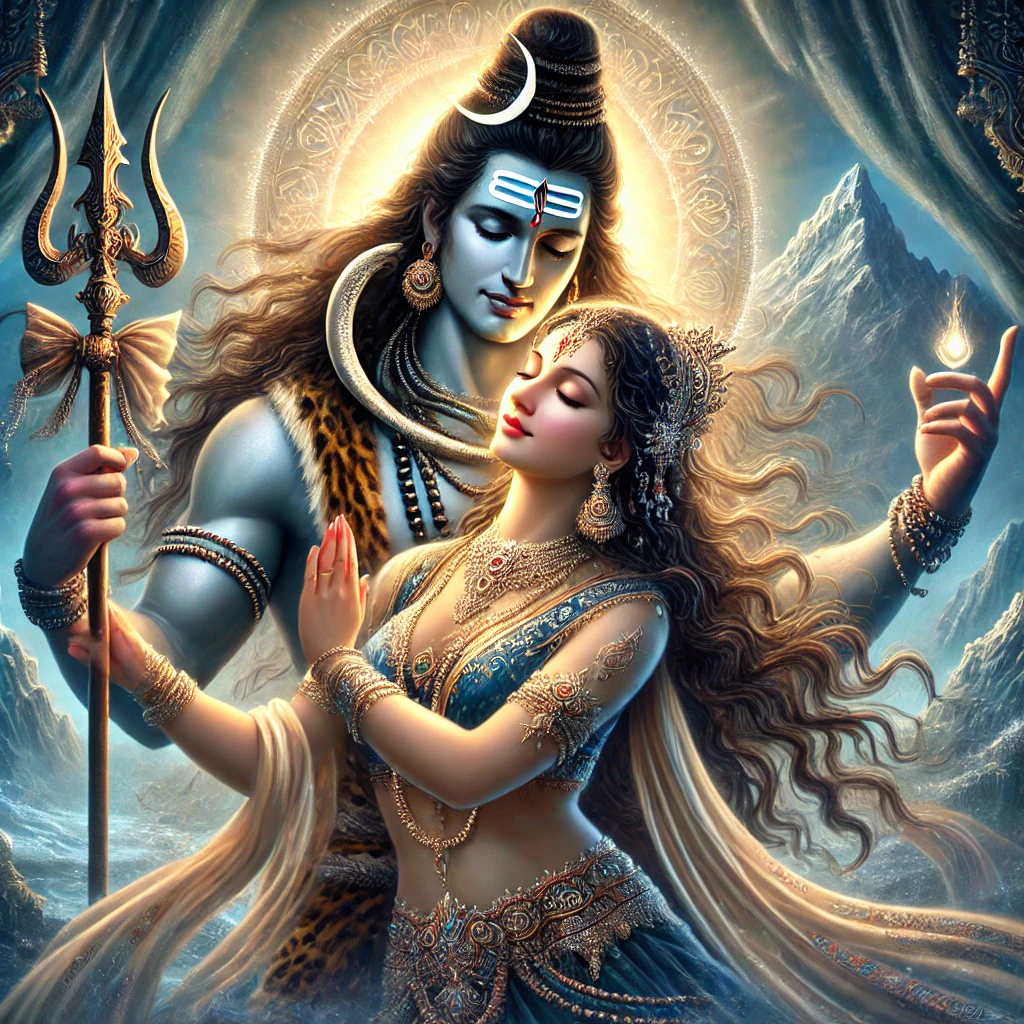
2. Drawing of the Shiv Parvati:
Learn how talented artists bring Shiv Parvati’s heavenly love story to life with elaborate sketches and delicate lines. The depictions frequently emphasize the celestial couple’s expressive facial features and body language.

3. Painting of Shiv Parvati:
Learn how talented artists bring Shiv Parvati’s heavenly love story to life with elaborate sketches and delicate lines. The depictions frequently emphasize the celestial couple’s expressive facial features and body language.
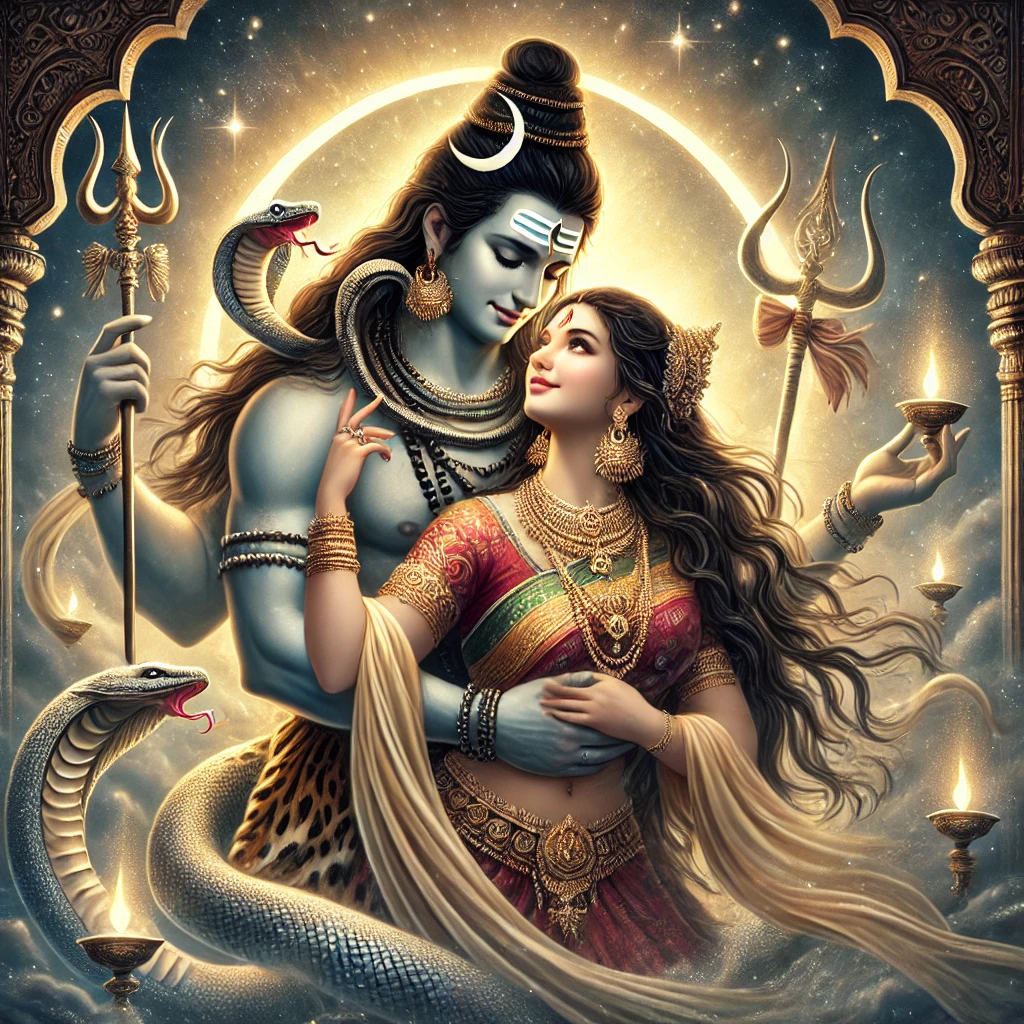
The Rich Art Traditions of India in Honor of Shiv-Parvati
This concept is profoundly recognized by traditional indigenous painters and artisans, who continually remind us shiv parvati love art with various techniques and styles. Take a look at how it’s portrayed around the nation:
A. Madhubani art form
The traditional Indian art form known as Madhubani is breathtaking in its use of vivid colors, themes, and complex geometric patterns. Women of Nepal and the Mithila region have a long tradition of painting on the walls of their homes. For years, skilled women craftspeople in the Mithila and Nepal regions have decorated the walls of their villages with intricate patterns made from natural materials such as matchsticks, twigs, and even their fingers. Symbols of abundance, harmony, serenity, fish, peacocks, and trees of life are common in Madhubani art.

The story of Madhubani paintings begins in the Ramayana, when King Janak of Mithila had artists make traditional Mithila bridal decorations. Using common household items, the artists brought to life stories from the Ramayana, Mahabharata, and Purana and scenes from tribal brides’ weddings.
The State Award–winning artist Pratima Bharti has done a fantastic job, in her artworks, of portraying the social fabric of Madhubani. In one of her famous paintings, she depicts the wedding of Shiva and Parvati, in which the gods Vishnu and Brahma watch as the ash-smeared Shiva, dressed as a tiger, and the bride, dressed in her bridal garb, exchange flowers. A single artwork encapsulates the entire story, with a border of vibrant colors and geometric lines. Madhubani is characterized by a dense use of plant and animal life and geometric patterns; the artist leaves little room for vacant space in her paintings.
B. Kalamkari
According to popular belief, the modern states of Andhra Pradesh and Telangana are the original locations of the Kalamakari art style, which is known for its elaborate patterns. The ancient art form gets its name from usingThe ancient art form gets its name from using a bamboo Kalam, or pen. The use. The use of organic dyes is one of the most striking features of this vibrant painting. Commonalities include scenes from sacred Indian literature with gods and natural elements like peacocks and tigers. The magnificence of the celestial marriage is exquisitely depicted in this masterpiece by Sudheer.

Sudheer has received multiple honors for his talent and commitment to his profession. In 2007, he won the Andhra Pradesh State Award; in; in 2009, he won the Konaseema Chitrakala Parisad Award. Shiva and Parvati exude an air of holiness as they sit side by side in this picture. Seated on a Vahana-Nandi adorned with jewels, they are seen in Varada Mudra, blessing their creations. When Shiva is relaxed, he holds his wife close; when Parvati is relaxed, she smiles. On the lower level, enchanted by the heavenly presence of Shiva and Parvati, rishis, asuras, and devas fold their hands in devotion. A conventional temple-like architectural environment houses the gods. The gods are shown in a royal style, adorned with jewel-encrusted crowns and dazzling jewelry. The face features, body representation, and attire of an asura, deva, or brahmin help distinguish them. In this place, space and time appear to vanish into thin air. Worth your time to look at, the painting has an ethereal quality about it.
C. Sikki Grass Work
Sikki, a golden grass native to Bihar, has unfathomably great potential. The Sikki craft is practiced mainly in Bihar, Uttar Pradesh, and Nepal’s Terai region. Sikki is indispensable in any field where precision is required, including packaging, toys, jewelry boxes, and the making of works of art. Its eco-friendliness and lightweight design are additional selling points.

Suraj Kumar Sahu has been adding a touch of creative grace to Sikki crafts for a long time with his incredible talent. Incredible care is taken with each strand of Sikki grass to depict the union of Shiva and Parvati or Shakti. There is outstanding metaphorical weight to this precise depiction. This represents Ardhanarishvara in all its glory. This is how Shiva consists of the female into his nature. According to famous perception, Brahma started a penance to assuage Shiva after understanding he couldn’t have his kids. After many millennia, Shiva detaches his left half, “Shakti,” and assumes the shape of Ardhanarishvara. Brahma receives the gift from Shakti that he can mentally create women. Prakriti and Purush, substance and spirit, Nara and Nari, etc., are all aspects of the Ardhanarishwar.
Some existing entities—like Agni and Soma, Pita and Mata, Linga and Yoni, Heaven and Earth—are seen as having this duality in the Vedas. Parvati represents vitality, sustenance, and harmony with her lotus, whereas Shiva represents his power to demolish ignorance and ego with a Trishula. This exquisite Sikki depiction beautifully captures Shiva and Shakti united, radiating divine beauty.
D. Patachitra
Bengal Patachitra is a form of scroll art created on an extended length of fabric. Skilled Patuas narrate the stories shown in Patachitra art with all the passion and feeling they have. In addition to Bengal, the states of Odisha and Bihar also have practitioners of the art form. Curiously, Pattachitra is not limited to paintings with a lengthy form. It has changed and evolved, giving rise to new varieties.

The eternal friendship and mutual understanding of Shiv and Parvati are brought to life in their paintings. Usually depicted with a bluish complexion, Shiva sits down next to his gracefully dressed consort, Parvati. It seems the gods are just ordinary villagers from how they’re portrayed. Except their third eye, the illustration is not stylized or overdone. The gods take center stage against the minimalist backdrop. Seated serenely on the loyal bull Nandi, they are. The vivid colors, distinct patterns, and fluid brushstrokes give the painting its own personality.
Also read:
Conclusion
Throughout this examination of Shiv Parvati love art, we have observed the story of divine love unfold. These works of art not only bring joy to the eyes but also bring devotees closer to God Shiva and Goddess Parvati, letting them feel the eternal love that exists between them. Art depicting Shiv Parvati, whether in the form of paintings or photographs, continues to captivate devotees and art lovers all around the globe.

